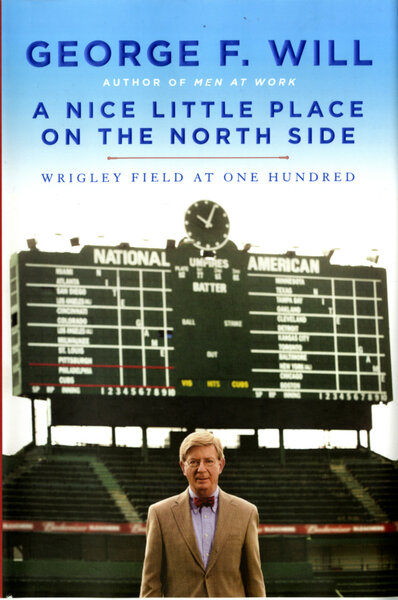By George Will
Crown Archetype
224 pages
"For a century, Wrigley Field has been a memory-making place for afternoon and evening communities. Hence the complex sentiments and associations that this simple North Side structure stirs.
Which is why we care so much about what happens in places like Wrigley Field. What happens, really? It is just a game. Yes, like any craft, it is worth doing well. And excellence, wherever it occurs, is worth savoring and honoring. But, in spite of the unending attempts of metaphysicians in the bleachers and press boxes to make sport more than it is, the real appeal of it for spectators is that sport enables us, for a few hours, to step out of the river of time and into a pastime.
"Which is is to say that sports – particularly professional sports, and especially baseball, with its enchanting everydayness – serve no valuable function. Utility, however, is not the same thing as meaning. Professional sports teams are municipal assets. They are public utilities that can help infuse a dust of individuals with a unifying sense of tame tribalism. Or, as in the case of Chicago, sports allegiances can transform a fragile mosaic of mutally wary neighborhoods into something like a community, one united, albeit tenuously and intermittently, by a shared vocabulary of affections, loyalties, hopes, and anxiieties.
"This is why there are many people – many millions, in fact – who rarely or never visit Wrigley Field but for whom this venue is nevertheless somehow important. Similarly, the United States Capitol and the Statue of Liberty are, for scores of millions of Americans who never visit them, reminders of what it means to be an American. For the subset of Americans who are baseball fans, Wrigley Field is an orienting patrimony. For this cohort, it is pleasant just knowing that the ballpark has bee there for a very long time, that it will be there for a long time, and they they could one day choose to drop by and enjoy it."
From "A Nice Little Place on the North Side," © 2014 by George F. Will. Reprinted by permission of Crown Archetype, an imprint of Crown Publishing Group.







